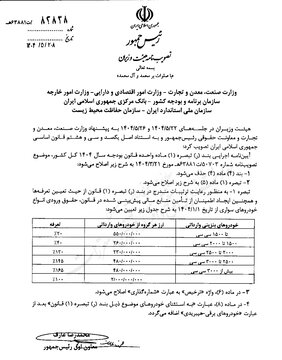
Iranian Government Finalizes Updated Vehicle Import Regulations
In a move to clarify and refine its automotive import policy, the Iranian government has issued the finalized executive bylaw for vehicle imports, following a review of its alignment with national legislation.
Policy Adjustments for Clarity and Compliance
The revisions were approved during cabinet meetings on August 13th and 17th and officially enacted on August 18th by First Vice President Mohammad Reza Aref. The amendments to the executive bylaw include the removal of certain clauses, modifications to specific notes for greater precision, and a change in terminology from “clearance” to “registration” in one article. A key clarification was also added, specifying that certain regulations for electric-hybrid vehicles do not apply to the vehicles covered under this specific budget law provision.
These adjustments were made in response to a review by the Hey’at-e Tatbiq-e Mosavabat-e Dowlat ba Qavanin (Commission for Adapting Governmental Decrees to Laws), a body stationed in the Islamic Consultative Assembly (Majlis) that ensures government resolutions are in full compliance with parliamentary laws. The commission had previously noted that the government’s initial import tariff schedule required reassessment to align with the overarching provisions of the national budget law for the current year.
Confirmed Import Tariff Structure
The core of the import regulations—the tariff schedule based on engine size—remains firmly in place. The government’s confirmed tariff structure for imported gasoline vehicles is as follows:
| Engine Capacity (cc) | Base Price (Rials) | Tariff |
|---|---|---|
| Up to 1500 | 550,000,000 | 20% |
| 1500 to 2000 | 260,000,000 | 40% |
| 2000 to 2500 | 230,000,000 | 130% |
| 2500 to 3000 | 480,000,000 | 145% |
| Over 3000 | 480,000,000 | 165% |
This structured tariff system is designed to regulate the automotive market, support domestic manufacturing priorities, and manage the flow of imported vehicles into the country in accordance with the nation’s economic policies.